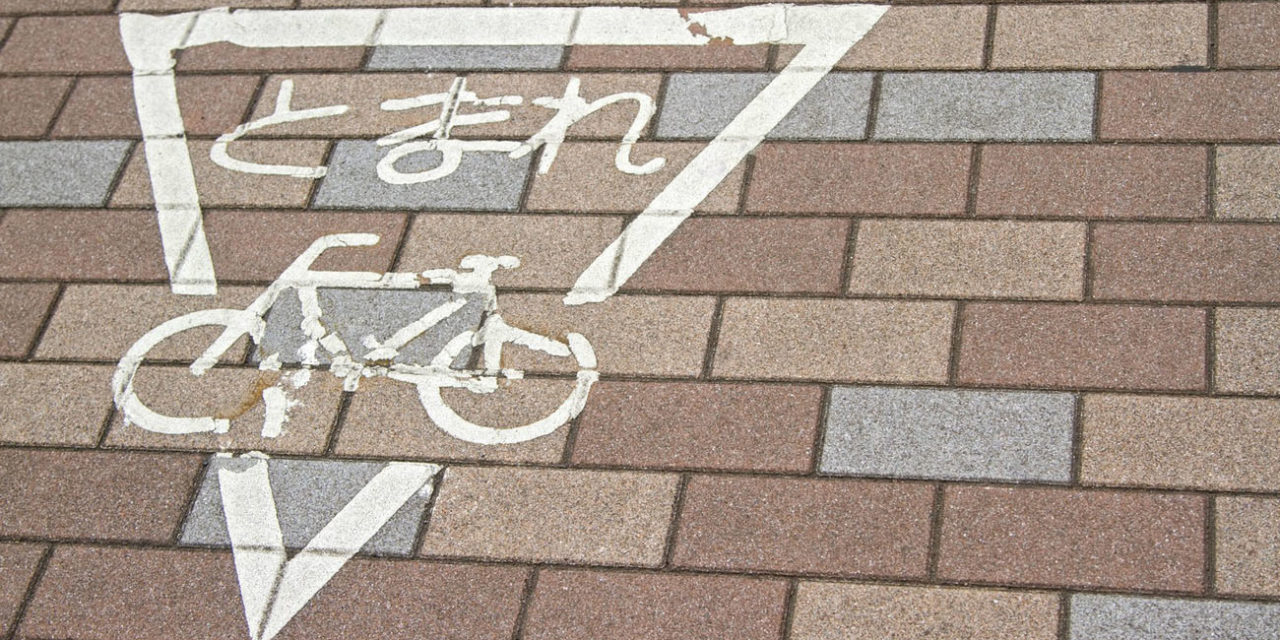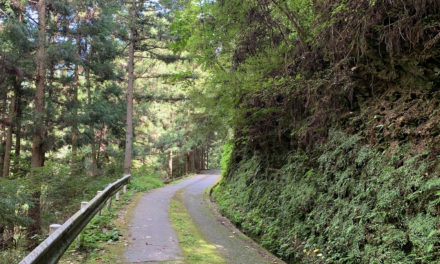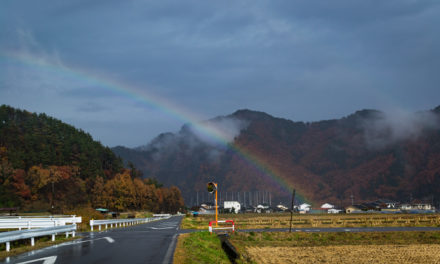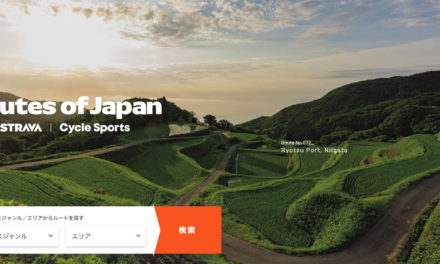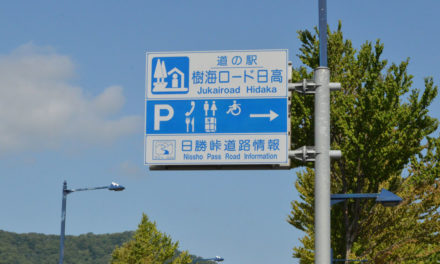Here’s a look at the road laws and rules for cycling in Japan, as well as the daily realities if you’re on a bike. Most of it is common sense but there’s usually a few things a first-timer won’t know.
Riding in Japan feels safe. Most drivers are courteous and there’s a good cycling culture, people use bikes for shopping, parents take kids to school on a mamachari bike. Sure it’s not the Netherlands, but it’s alright.
A bicycle is a light vehicle under the law so you must follow all the road signs and traffic lights. But you can’t ride on Expressways, the network of high speed freeways (you wouldn’t want to either).
People drive and ride on the left. Obvious but if you’ve never been, now you know. If you’re used to riding on the right you can turn at a junction and after turning end up on the wrong side without thinking.
You use the road and not the sidewalk. Sometimes there are signs indicating a shared path for pedestrians and cyclists. In reality you see many riding on the sidewalk, especially on shopping bikes but it’s really meant for kids and the elderly. They’re not supposed to go more than 10km/h. If you’re on a touring bike the road is probably quicker.
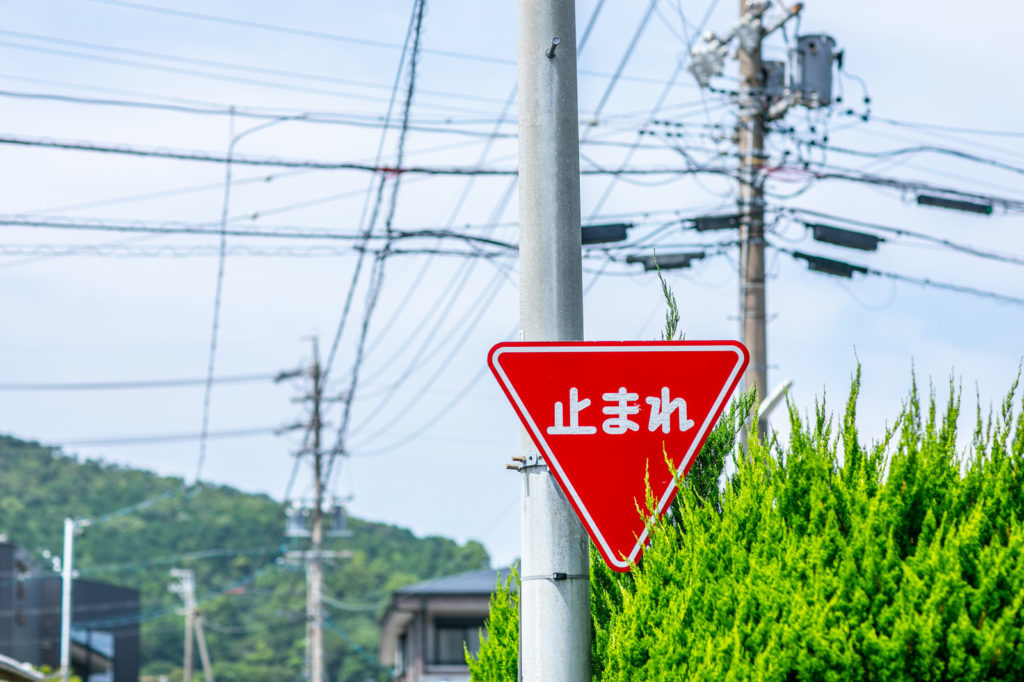
Obey stop signs. To do this, first recognise them: they are triangular. You can mistake them for “yield” but 止まれ (“to-ma-re”) means stop. Since 2017 new signs also have “Stop” in the Roman/western alphabet but you won’t see them on rural roads yet.
You have to ride single-file. You might ride two-by-two at home, reasoning this offers passing motorists a “shorter” object to overtake, but it’s a genuine difference in practice in Japan. Local cyclists ride in single file and even hold conversations this way. You can use common sense, if you’re on a forest backroad with no traffic then up to you. But on a normal road with light traffic, it’s one by one.
For your bike
Your bike needs a front light, a rear reflector and a bell. I’d say this is 50-50. Even cyclists with lightweight team-issue road bikes can have front-facing LEDs, or a proper light on their bike computer mount. A visitor is unlikely to get in trouble but not having a light gives the police a reason to pull you over. Even if you travel in daylight hours a front light comes in handy when exploring inland as there can be many tunnels. Most have lighting but not all.

The penalty for the things listed above can go up to a 3 month prison sentence and a fine up to ¥50,000. Now that’s the upper limit, a deterrent headline and probably only for repeat, reckless offenders. It’s hard to get caught and as a tourist you’d probably get a warning. But running a red light in front of a police motorbike is asking for a fine which means not only the cash but also the admin and a lot of questions. If you don’t speak Japanese this could take a long time, tickets are often written out at the police station rather than beside the road. Don’t ask me how I know this, please.
No alcohol. Many countries have thresholds for blood alcohol that permit to a drink or two. Not in Japan, the limit is very low and the penalty is very high and because a bike is a vehicle, the alcohol rules apply here. You’re unlikely to get stopped and tested, but if you did have an accident they could test and it’s here you’d be in big trouble.
Helmets
New for 2023 is a law requiring everyone cycling to wear a helmet. Or does it? The TLDR is it’s the law to try and wear one but there’s no fine if you don’t but if you have an accident it could make your case harder. If you’re confused, please see the separate article here about it.
Other things
You need your passport on you at all times. Out for a day’s riding I’ve taken my phone with a saved scanned copy of my passport as back-up.
Those over 13 don’t have to wear a helmet.
Insurance is now compulsory in some parts of Japan. It’s a whole other topic, see Bicycle Insurance in Japan. It’s very unlikely you get stopped and checked but if you have an accident you can be liable for big costs. If you want to cover the risk, take out insurance. Residents with an address in Japan can get this in a convenience store. Travellers should first try to find insurance at home.
All distances are measured in kilometres.
It’s not the law but if you want to take your bike on a train, it’s fine as long as you use a rinko bag.
In case of an accident
If you do have an accident with another road user, call the police on 110 or if there’s one nearby, go to a kōban police hut. More likely the other person is Japanese and they call the police. Don’t freak out at the police arriving, it’s procedure for any road traffic accident and not an emergency issue. There’s an English-speaking helpline if you dial 050-3816-2787 or your country’s embassy or consulate can help too.
Travel tips
- 95% of the laws and rules for cycling in Japan are common sense, if you ride safely at home, you’ll be fine here
- Japan’s roads feel safe because people tend follow the rules and you are expected to as well
- Enquire about travel insurance and accident / liability insurance for your trip

